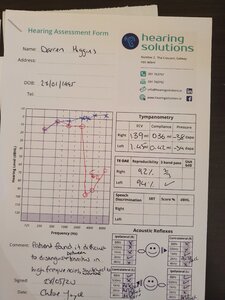- Feb 14, 2020
- 1,630
- Tinnitus Since
- 1-2019
- Cause of Tinnitus
- 20+ Years of Live Music, Motorcycles, and Power Tools
Yes. They keep a presentation updated on their website regarding the Phase 1/2 trials from a single dose (now they are testing up to 4 in the Phase 2a).Long time lurker here. This is the first I've checked this thread in about a year, but I must say 6500 Hz-20000 Hz seems pretty disappointing to me. I tested that range with various audio files on my computer with high-end speakers and I guess I'm not seeing how improving that range is really going to help much. I mean, anything is better than nothing, however, when you have to pay thousands or tens of thousands for it, I'm not sure it will be worth it.
Have they ever released any data on how many decibels recovered in the test subjects? If it's only a couple, I just don't see how this will make much of a difference. If it's substantial, I'd also worry about everything potentially sounding too high-fi in comparison to other frequencies, making everything sound like it's coming from an iPhone speaker.
https://investors.frequencytx.com/events-and-presentations
In the Phase 1/2, significant improvements were seen in word score both in a silent background and noisy background. Some participants also showed a 10 dB improvement as low as 8 kHz. Unfortunately they did not include a high frequency audiogram in the Phase 1/2, so cannot provide more data on the actual level of improvement.
I am not a scientist; but I would assume that restoring the hair cells at this high frequency would at the very least provide the auditory system with more fully functioning cells to work with; not amplify sound at those frequencies. So, with more working cells, the patient is able to be more sensitive at those levels, but also may notice a reduction in hyperacusis/tinnitus if it is in those frequencies. Or who knows, may notice a reduction in tinnitus wherever it is experienced just because the auditory system is receiving better quality signals from a larger quantity of new cells.
Two hypothesis that Frequency is hoping to learn from multiple doses in the Phase 2A, is whether FX-322 will penetrate more deeply into the cochlea, there by increasing growth in lower frequencies (Below 8 kHz); or will cause more patients to show improvements at the same ranges as the Phase 1/2 (8 kHz+). Or potentially both.
Some suspect that the delivery mechanism is the issue penetrating the cochlea and not the drug itself. Frequency has mentioned a number of times that they have been able to regenerate cells at all frequencies in cochlea in vitro. So, I would argue this is a pretty impressive first step.

 Member
Member
